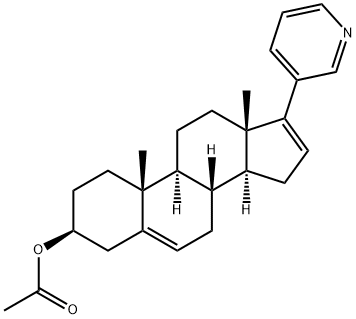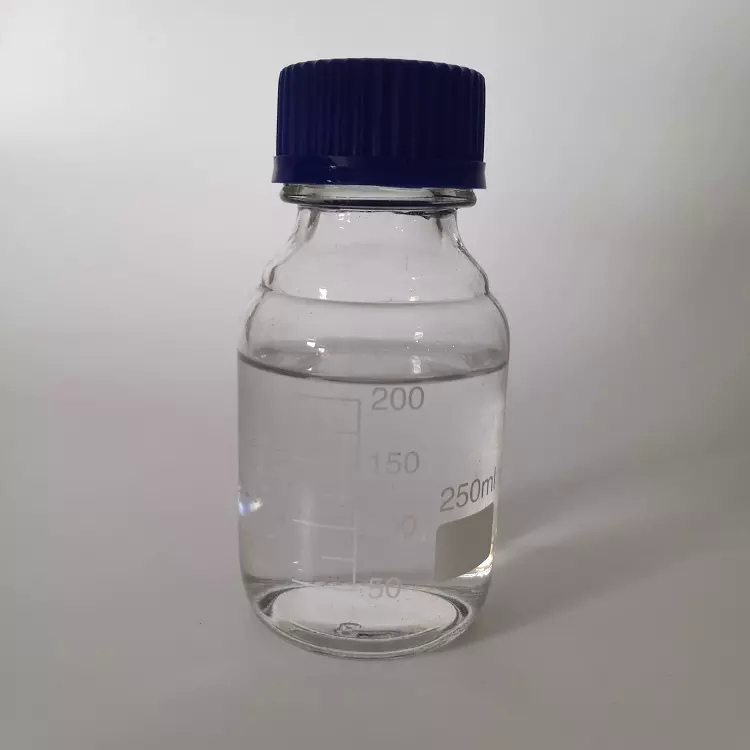tert-Butyl acetate
Synonym(s):Acetic acid tert-butyl ester;TBAc;tert-Butyl acetate
- CAS NO.:540-88-5
- Empirical Formula: C6H12O2
- Molecular Weight: 116.16
- MDL number: MFCD00008807
- EINECS: 208-760-7
- SAFETY DATA SHEET (SDS)
- Update Date: 2025-12-17 09:49:34

What is tert-Butyl acetate ?
Chemical properties
tert-Butyl acetate or t-butyl acetate is a colorless flammable liquid with a camphoror blueberry-like smell. It is used as a solvent in the production of lacquers, enamels, inks, adhesives, thinners, and industrial cleaners. It is also used as an additive to improve the antiknock properties of motor fuels. tert-Butyl acetate has three isomers: n-butyl acetate, isobutyl acetate, and sec-butyl acetate.
Physical properties
Colorless liquid with a fruity odor. Odor threshold concentration in water is 4 ppm (CHRIS, 1994). Nagata and Takeuchi (1990) reported an odor threshold concentration of 71 ppbv.
The Uses of tert-Butyl acetate
tert-Butyl acetate is common industrial solvent used in the making of lacquers, artificial leather, airplane dope, perfume, and as a food additive.
Production Methods
tert-Butyl acetate is prepared from isobutylene reacting with acetic acid in the liquid phase with vanadium pentoxideimpregnated silica as the catalyst and with heat to increase the yield .
Synthesis Reference(s)
Organic Syntheses, Coll. Vol. 3, p. 142, 1955
Synthesis, p. 1015, 1987
Tetrahedron Letters, 37, p. 4555, 1996 DOI: 10.1016/0040-4039(96)00902-1
General Description
Tert-butyl acetate is a colorless liquid with a mild odor. Floats on water. Produces irritating vapor. (USCG, 1999)
Air & Water Reactions
Highly flammable. Insoluble in water.
Reactivity Profile
tert-Butyl acetate is an ester. Esters react with acids to liberate heat along with alcohols and acids. Strong oxidizing acids may cause a vigorous reaction that is sufficiently exothermic to ignite the reaction products. Heat is also generated by the interaction of esters with caustic solutions. Flammable hydrogen is generated by mixing esters with alkali metals and hydrides. tert-Butyl acetate is incompatible with the following: Nitrates; strong oxidizers, alkalis & acids .
Hazard
Flammable, moderate fire risk. Eye and upper respiratory tract irritant.
Health Hazard
Exposure to tert-butyl acetate causes eye, skin, and respiratory irritation in workers. By analogy with the effects of exposure to similar esters, tert-butyl acetate may act as a CNS depressant at high concentrations. The signs and symptoms of acute exposure to tert-butyl acetate include, but are not limited to, itchy or inflamed eyes and irritation of the nose and upper respiratory tract. Exposures to tert-butyl acetate at high concentrations may cause headache, drowsiness, and other narcotic effects.
Safety Profile
Poison by inhalation and ingestion. Flammable. To fight fire, use alcohol foam, CO2, dry chemical. When heated to decomposition it emits acrid smoke and irritating fumes.
Potential Exposure
n-Butyl acetate is an important solvent in the production of lacquers, leather and airplane dopes, and perfumes. It is used as a solvent and gasoline additive. sec-Butyl acetate is used as a widely used solvent for nitrocellulose, nail enamels and many different purposes. tert-Butyl acetate is common industrial solvent used in the making of lacquers, artificial leather, airplane dope, perfume; and as a food additive. Isobutyl acetate is used as a solvent and in perfumes and artificial flavoring materials
Environmental Fate
Chemical/Physical. Hydrolyzes in water to tert-butyl alcohol and acetic acid. The estimated hydrolysis half-life at 25 °C and pH 7 is 140 yr (Mabey and Mill, 1978).
Storage
tert-Butyl acetate should be stored in a cool, dry, well-ventilated area in tightly sealed containers that are labeled in accordance with regulatory standards. Containers of tert butyl acetate should be protected from physical damage and should be stored separately from nitrates, strong oxidizers, strong acids, strong alkalis, heat, sparks, and open flame. Because containers that formerly contained tert-butyl acetate may still hold product resi dues, they should be handled appropriately
Shipping
UN1123 Butyl acetates, Hazard Class: 3; Labels: 3—Flammable liquid.
Purification Methods
Wash the ester with 5% Na2CO3 solution, then saturated aqueous CaCl2, dry with CaSO4 and distil it. [McClosky et al. Org Synth Coll Vol IV 263 1963, Mangia et al. Org Prep Proc Int 18 13 1986, Beilstein 2 IV 151.]
Incompatibilities
All butyl acetates are incompatible with nitrates, strong oxidizers; strong alkalies; strong acids. Butyl acetates may form explosive mixture with air; reacts with water, on standing, to form acetic acid and n-butyl alcohol. Violent reaction with strong oxidizers and potassium-tert-butoxide. Dissolves rubber, many plastics, resins and some coatings. May accumulate static electrical charges, and may cause ignition of its vapors
Waste Disposal
Dissolve or mix the material with a combustible solvent and burn in a chemical incinerator equipped with an afterburner and scrubber. All federal, state, and local environmental regulations must be observed.
Precautions
If exposures to tert-butyl acetate or a solution in work areas gets into the eyes, immediately fl ush the eyes with large amounts of water for a minimum of 15 min, lifting the lower and upper lids occasionally. Always use safety goggles or eye protection in combination with breathing protection.
Properties of tert-Butyl acetate
| Melting point: | -62°C |
| Boiling point: | 98 °C |
| Density | 0.866 g/mL at 20 °C(lit.) |
| vapor density | 4.01 (vs air) |
| vapor pressure | 41 hPa (20 °C) |
| refractive index | n |
| Flash point: | 60 °F |
| storage temp. | Store below +30°C. |
| solubility | Miscible with alcohol and ether (Windholz et al., 1983). |
| form | Liquid |
| color | Clear colorless |
| Odor | Fruity |
| explosive limit | 1.5%(V) |
| Odor Threshold | 0.071ppm |
| Water Solubility | insoluble |
| Merck | 14,1537 |
| BRN | 1699506 |
| Exposure limits | NIOSH REL: TWA 200 ppm (950 mg/m3), IDLH 1,500 ppm; OSHA PEL:
TWA 200 ppm; ACGIH TLV: TWA 200 ppm (adopted). |
| CAS DataBase Reference | 540-88-5(CAS DataBase Reference) |
| NIST Chemistry Reference | Acetic acid, 1,1-dimethylethyl ester(540-88-5) |
| EPA Substance Registry System | tert-Butyl acetate (540-88-5) |
Safety information for tert-Butyl acetate
| Signal word | Danger |
| Pictogram(s) |
 Flame Flammables GHS02 |
| GHS Hazard Statements |
H225:Flammable liquids |
| Precautionary Statement Codes |
P210:Keep away from heat/sparks/open flames/hot surfaces. — No smoking. |
Computed Descriptors for tert-Butyl acetate
| InChIKey | WMOVHXAZOJBABW-UHFFFAOYSA-N |
tert-Butyl acetate manufacturer
New Products
4,4-Difluoropiperidine hydrochloride tert-butyl 9-methoxy-3-azaspiro[5.5]undecane-3-carboxylate Indole Methyl Resin N-Isopropylurea N,N-Dicyclohexylcarbodiimide(DCC) MELDRUMS ACID 5-METHYLISOXAZOLE-4-CARBOXYLIC ACID Magnessium Bis glycinate Zinc ascorbate 1-bromo-2-butyne 2-acetamidophenol 9(10H)-anthracenone Erythrosin B, 4-Piperidinopiperidine 2-((4-morpholinophenylamino) (methylthio) methylene) malononitrile 2,4-dihydroxybenzaldehyde 3-(4-morpholinophenylamino)-5-amino-1H-pyrazole-4-carbonitrile Methyl 2-methylquinoline-6-carboxylate 2,6-dichloro-4-nitropyridine 4-Bromo-2-chlorobenzonitrile 2-(benzylamino)acetic acid hydrochloride 4-(tert-Butoxycarbonylamino)but- 2-ynoic acid 3,4-dihydro-2H-benzo[b][1,4]dioxepine 1-Phenyl-1-cycloprppanecarboxylicacidRelated products of tetrahydrofuran








You may like
-
 TERTIARY BUTYL ACETATE 99%View Details
TERTIARY BUTYL ACETATE 99%View Details -
 Tertiary Butyl Acetate 99%View Details
Tertiary Butyl Acetate 99%View Details -
 tert-Butyl acetate CAS 540-88-5View Details
tert-Butyl acetate CAS 540-88-5View Details
540-88-5 -
 tert-Butyl Acetate CAS 540-88-5View Details
tert-Butyl Acetate CAS 540-88-5View Details
540-88-5 -
 tert-Butyl acetate CAS 540-88-5View Details
tert-Butyl acetate CAS 540-88-5View Details
540-88-5 -
 tert-BUTYL ACETATE Extra Pure CAS 540-88-5View Details
tert-BUTYL ACETATE Extra Pure CAS 540-88-5View Details
540-88-5 -
 Tert Butyl Acetate CASView Details
Tert Butyl Acetate CASView Details -
 tert-Butyl acetate CAS 540-88-5View Details
tert-Butyl acetate CAS 540-88-5View Details
540-88-5
